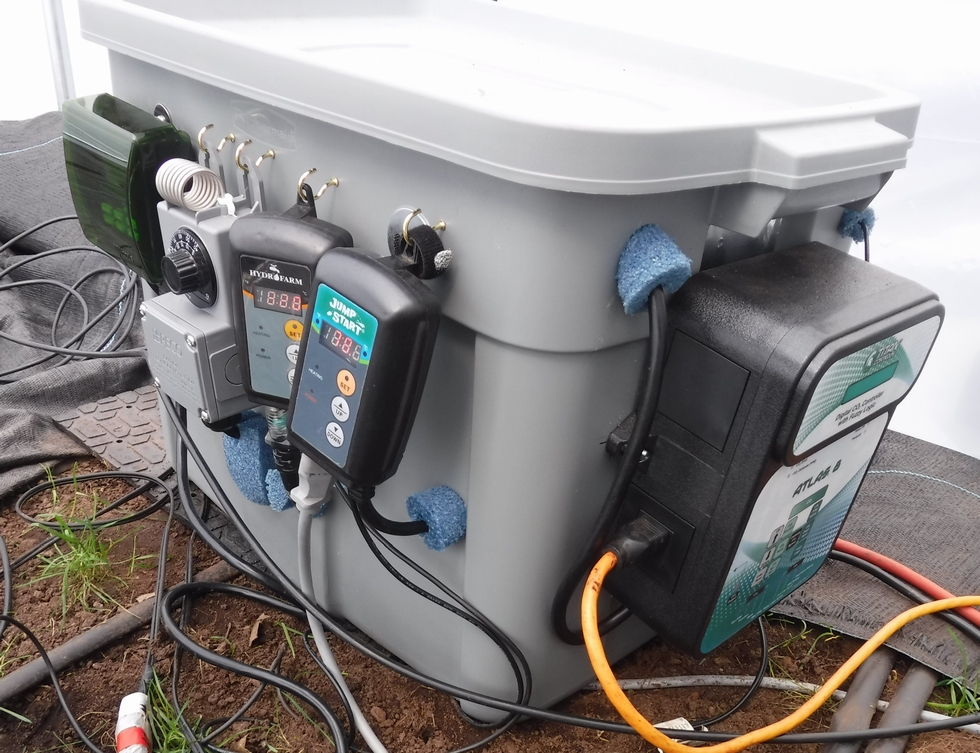| |
|
Entry Date
|
Nick Name
|
Location
|
|
Tuesday, October 08, 2024
|

|
Matt D.
|
Connecticut
|
 |
Entry 111 of 116 |
 |
|
|
|
6. Automation
This is an interesting topic and one that does not nessiraily mean complicated or expensive. The idea of automation is to provide consistent conditions that allow the grower to plan and make adjustments from.
The most obvious type of automation is timers and these can be light and/or irrigation timers. Using these along with the drip tapes can ensure a continual and reliable source of water for the pumpkin plants. Now, if the grower wants to add more or notices dry pockets they can make this adjustment. The goal of the automation is to provide that base to make adjustments from.
Ideally, the automation would regulate both positively and negatively based on conditions to help ensure the growing environment is kept in a certain pre-determined range. An example of this would be a heater and a vent fan connected to the same dule stage thermostat to keep the temperature in the grow space between two preset temperatures.
If a grower wants to control multiple environment aspects there are two schools of thought. One is to buy the �best� for each given condition, which isolates all of the systems so if one fails ideally, it is only one component. The other idea is to have a central �brain� where all of the sensors feed into to ensure no conflicts with the system operations. This has the benefits of easily comparing all of the conditions, but if the brain fails so does the entire system.
I have chosen to go with the series of independent environmental condition automation. It works out great, especially early in the season as can be seen in the image.
This study looked at grower controls vs artificial intelligence supported regulation of greenhouse conditions in relation to cucumber production�
Remote Control of Greenhouse Vegetable Production with Artificial Intelligence�Greenhouse Climate, Irrigation, and Crop Production
https://www.mdpi.com/1424-8220/19/8/1807
|
|
|



